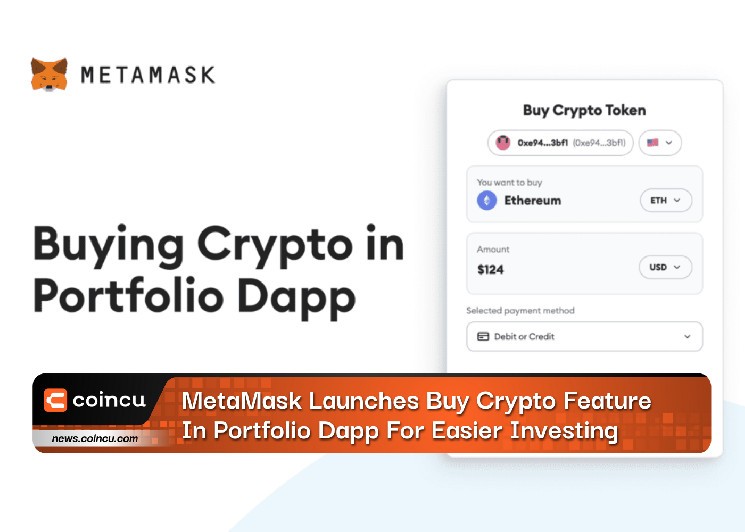MetaMask Launches Buy Crypto Feature In Portfolio Dapp For Easier Investing

MetaMask has announced the launch of its Buy Crypto feature in its Portfolio Dapp. This feature allows users to purchase cryptocurrencies with fiat currency using various payment methods such as debit or credit card, PayPal, Bank Transfer, or Instant ACH. The feature considers several variables to present users with a customized quote, such as region, payment method, token, and amount.
MetaMask has been on a mission to partner with providers worldwide to help welcome anyone – regardless of where they are based – to web3. In the past year, MetaMask has partnered with PayPal, MoonPay, Sardine, Banxa, Onramp.money, Mercuryo, and Transak to offer an easy onboarding process. The aggregator service is convenient, secure, and easy to use.
Users can access the aggregator by directly connecting to Portfolio Dapp or selecting the Buy button in the MetaMask extension wallet, redirecting them to portfolio.metamask.io/buy. To fund their wallet, users can connect their MetaMask wallet to portfolio.metamask.io, click Buy to get started, select their region, payment method, token, and network, enter the amount in fiat, click Get Quotes, and select a quote from the different available providers. They will then be securely redirected to the provider’s website to complete the purchase, and the funds will be deposited in their MetaMask wallet.
MetaMask’s Buy Crypto feature offers a convenient and secure way to purchase cryptocurrencies with fiat currency, making it easier for users to invest in the crypto market. With its wide range of payment methods and tokens and its customized quote feature, MetaMask users can easily find the best deal for them.
DISCLAIMER: The Information on this website is provided as general market commentary and does not constitute investment advice. We encourage you to do your own research before investing.






 Bitcoin
Bitcoin  Ethereum
Ethereum  Tether
Tether  USDC
USDC  TRON
TRON  Dogecoin
Dogecoin  Cardano
Cardano  Bitcoin Cash
Bitcoin Cash  Chainlink
Chainlink  Monero
Monero  LEO Token
LEO Token  Stellar
Stellar  Zcash
Zcash  Litecoin
Litecoin  Hedera
Hedera  Dai
Dai  Cronos
Cronos  Tether Gold
Tether Gold  OKB
OKB  Ethereum Classic
Ethereum Classic  KuCoin
KuCoin  Algorand
Algorand  Cosmos Hub
Cosmos Hub  Gate
Gate  VeChain
VeChain  Stacks
Stacks  Tezos
Tezos  TrueUSD
TrueUSD  Dash
Dash  IOTA
IOTA  Basic Attention
Basic Attention  Theta Network
Theta Network  Decred
Decred  NEO
NEO  Synthetix
Synthetix  Qtum
Qtum  Ravencoin
Ravencoin  0x Protocol
0x Protocol  DigiByte
DigiByte  Zilliqa
Zilliqa  Holo
Holo  Nano
Nano  Siacoin
Siacoin  Numeraire
Numeraire  Waves
Waves  Status
Status  Ontology
Ontology  Enjin Coin
Enjin Coin  BUSD
BUSD  Hive
Hive  Pax Dollar
Pax Dollar  Lisk
Lisk  Steem
Steem  Huobi
Huobi  OMG Network
OMG Network  NEM
NEM  Bitcoin Gold
Bitcoin Gold  Bitcoin Diamond
Bitcoin Diamond  Augur
Augur